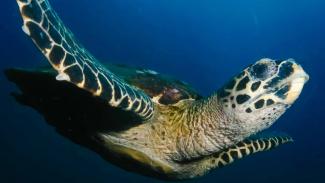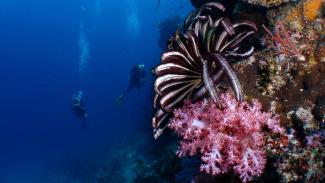With their large expressive eyes & often curious nature, Porcupine Pufferfish are regular favourites with divers. They are relatively big for reef fish and have a body that is entirely covered in short spines.
When stressed or threatened they have the ability to suck in water to increase the size of their bodies, giving them their name. When fully inflated, their spines stick straight out from their rounded bodies, making them impossible for all but the biggest of mouths to swallow.
Unlike many reef fish they can be quite curious and if not sleeping on the reef will often approach divers for a closer look, maybe a result of their confidence in their amazing defences.

David Clode
They are ranked as one of the "smart" fish, with a higher than average intelligence.
Family variety
Behaviour
Porcupine pufferfish are usually solitary and are only seen in pairs or small groups when mating.
Reproduction
Diet
Defences
FACTFILE
SPECIES: 19. 6 in Asian waters.
SIZE RANGE: 20-70 cm
DISTRIBUTION:
Found in tropical and sub-tropical regions.
HABITAT:
Pelagic as juveniles, settling in shore when larger. Usually found near seabed or mid-water.
THREATS:
Easily stressed and become vulnerable if they inflate too often. Sometimes sold as souvenirs.
Identification tips
-
The ability to inflate their body by swallowing water (or air) and become round like a ball.
-
Large eyes as they are mainly nocturnal, often hiding in caves or beneath ledges during the day.
-
Sharp heavy spines cover their head and body which in some species lie flat, only radiating outwards when the fish is inflated.
-
Dorsal and anal fins positioned far back on the body.
-
A single plate of fused teeth in each of the upper and lower jaws, ideal for crushing the hard shelled invertebrates they eat.
-
No pelvic fins
Popular species
Porcupine pufferfish are commonly encountered on reefs throughout Asia. Here are some popular species of the family.
Porcupinefish
(Diodon hystrix)
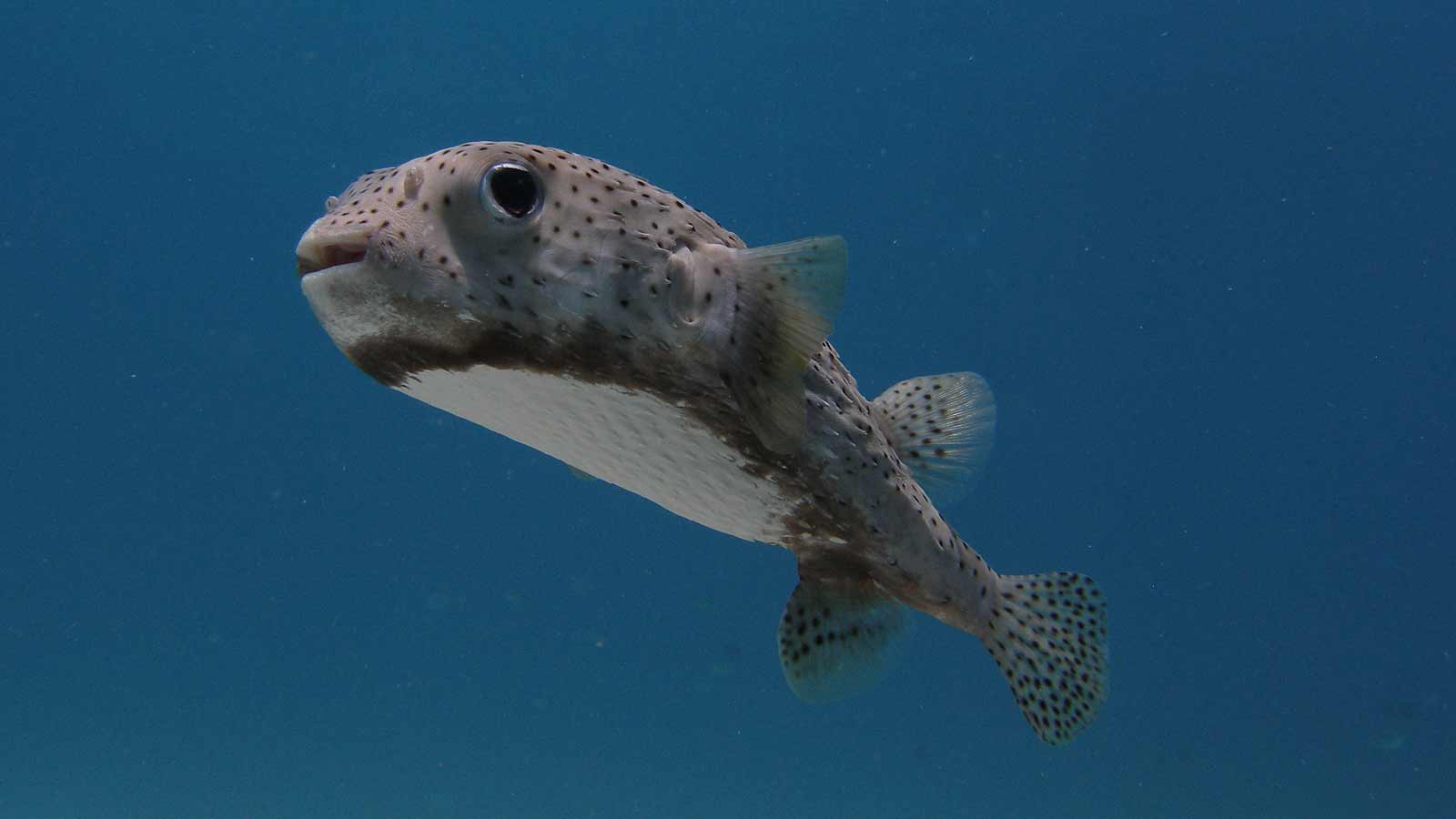
Largest family member, up to 90cm in length. Yellow or beige colour with many small black dots and a paler underside. They are found throughout the world’s tropical waters, and are extremely common in certain areas.
Juveniles are pelagic, settling on the reef when they reach around 20cm in size. Often very curious, adults search out shallow lagoons and seaward reefs and can often be found sheltering under ledges or in caves during the day.
Black Blotched Porcupine Pufferfish
(Diodon liturosus)
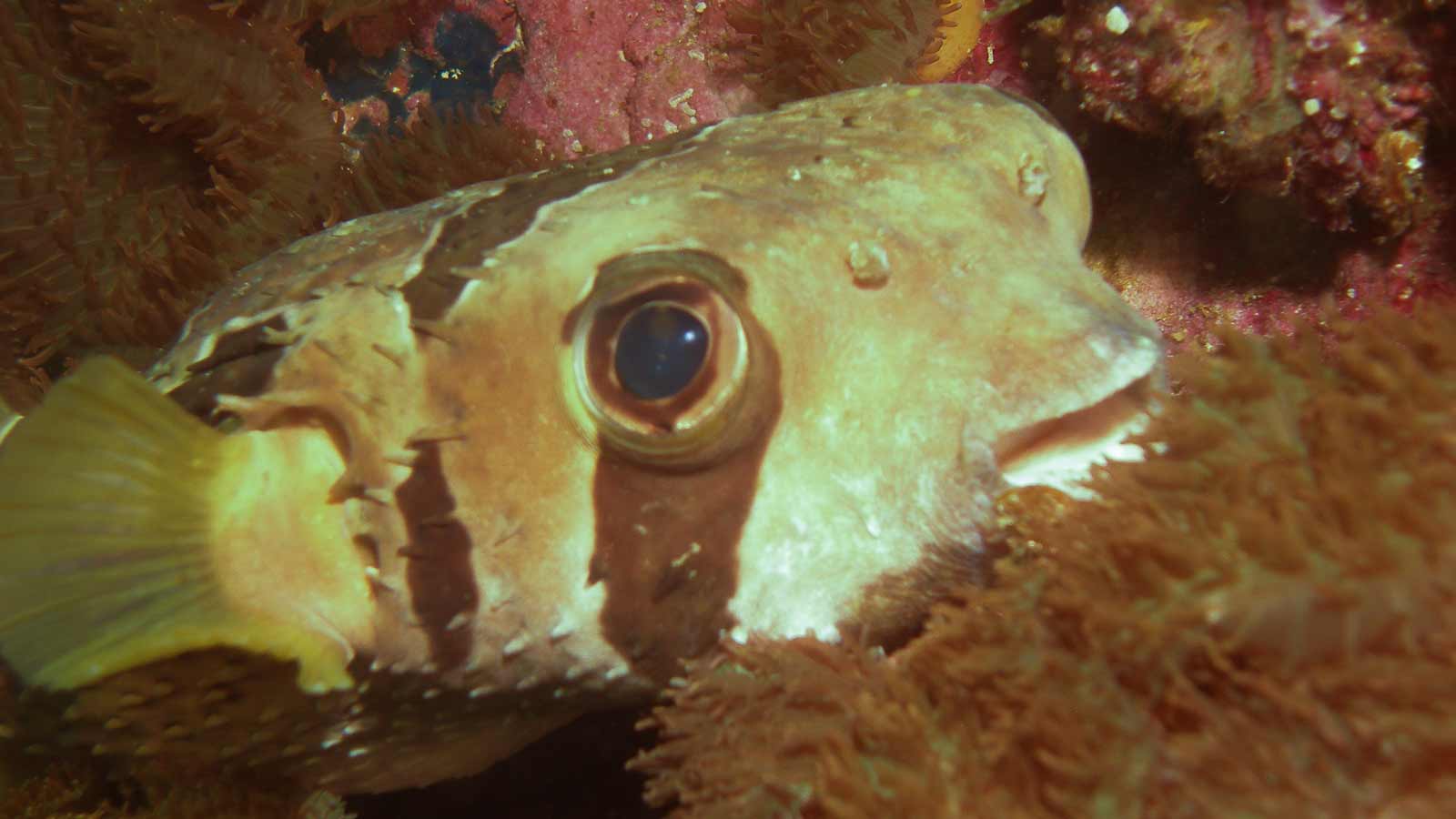
This species can reach up to 60cm in length, An uncharacteristically shy member of the family, it often wedges itself into crevices or under ledges during the day.
Inhabiting reefs from the Red Sea to Austrailia, it is easily identified by its distinctive black blotches on its creamy yellow skin.
Spotbase Burrfish
(Cyclichthys spilostylus)
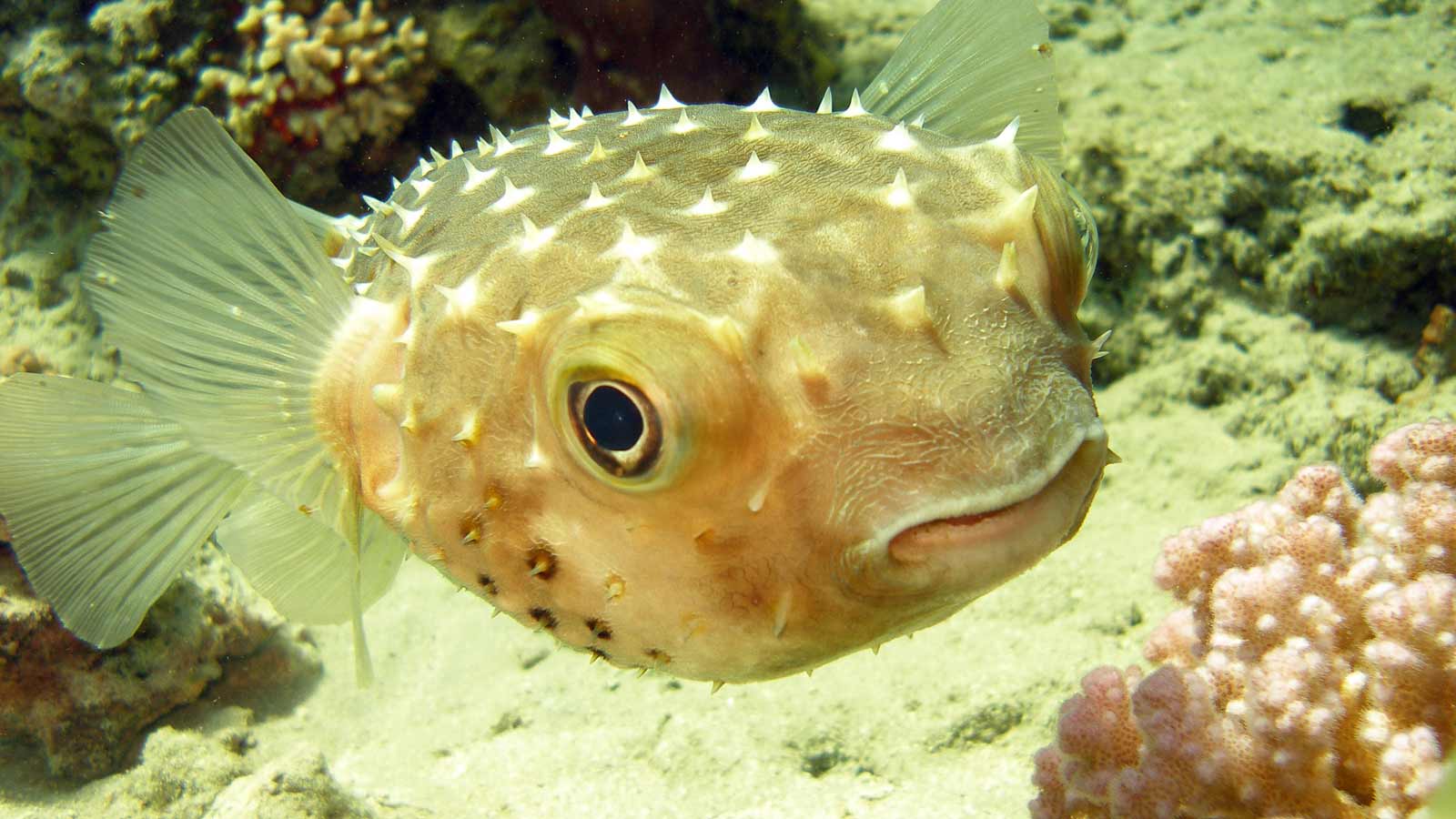
Only 35cm in length, this is one of the smaller family members. It can be spotted from the Red Sea to Austrailia & often lives in or near seagrass.
Like all family members, it tends to feed at night on molluscs and crustaceans and spends its days getting some rest.




